
Interview with Jutta Hobbelhagen (Haufe Group)
2023-02-16
Interview with Jonas Gubo (PUMA Group)
2024-02-06
A casual definition of accounts receivable (AR) is the money that customers owe a business for goods or services they’ve received but haven’t paid for yet.
Natural language processing (NLP) is a field of artificial intelligence that focuses on enabling computers to understand, interpret, and generate human language in a way that is both meaningful and useful. In the last few years, the field of NLP has experienced numerous research breakthroughs, leading to a wide range of practical applications. In this article, we will explore a few practical applications of NLP in accounts receivable:
- Summarization
- Classification
- Extracting information
Challenges in Accounts Receivable
- High Days Sales Outstanding (DSO): DSO is the average number of days it takes credit sales to be converted into cash or how long it takes to collect account receivables. A high DSO means it takes a relatively long time to collect outstanding receivables, which can lead to cash flow problems.
- Inefficient Invoicing and Follow-up: Inefficiencies in invoicing can drive up costs and strain relationships between companies and their vendors. Lack of proactive follow-up on outstanding invoices and slow payments can affect the vendor’s cash flow.
- Operational Inefficiencies: Chasing unpaid invoices consumes valuable time and resources, leading to decreased productivity and added administrative burden.
- Disputes and Payment Delays: Disputes over invoices and delayed payments are common in B2B transactions. These can be due to various factors such as financial difficulties faced by the debtor company, inaccuracies in the invoice, missing invoices, etc.
NLP applied to AR
At Saltech Consulting we co-created a Cash Collection Management Tool (CCMT) with Siemens in order to improve operational efficiency. This led to improvements in digitalizing processes and streamlining common operations involving structured data such as invoices, credit notes, customer records, etc. The area that proved to be challenging to improve, particularly back in 2016, when the project started, was working with unstructured data, such as emails and notes. With recent advances in NLP (and other AI models) there are many opportunities for productivity and transparency gains. Let’s look at a few examples:
Summarization
A common challenge for AR specialists is staying updated with the latest account status and determining necessary actions. This can include going over a long history of notes or long multithreaded emails. Summarizing key information can significantly help in this case.
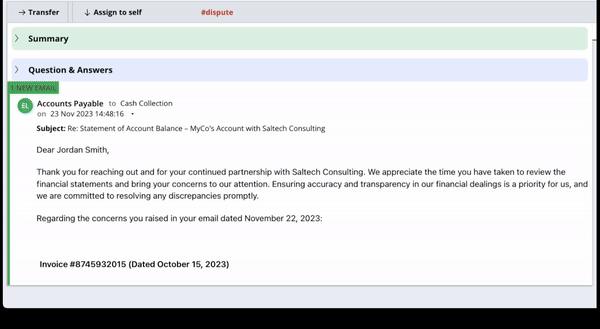
Classification
When dealing with a large number of emails it can be useful to automatically detect the intent of the email. This information can help to either route the email to the adequate person/team or if possible, process it automatically.
In cash collection, emails that are important to act on timely are when a customer:
- disputes an item,
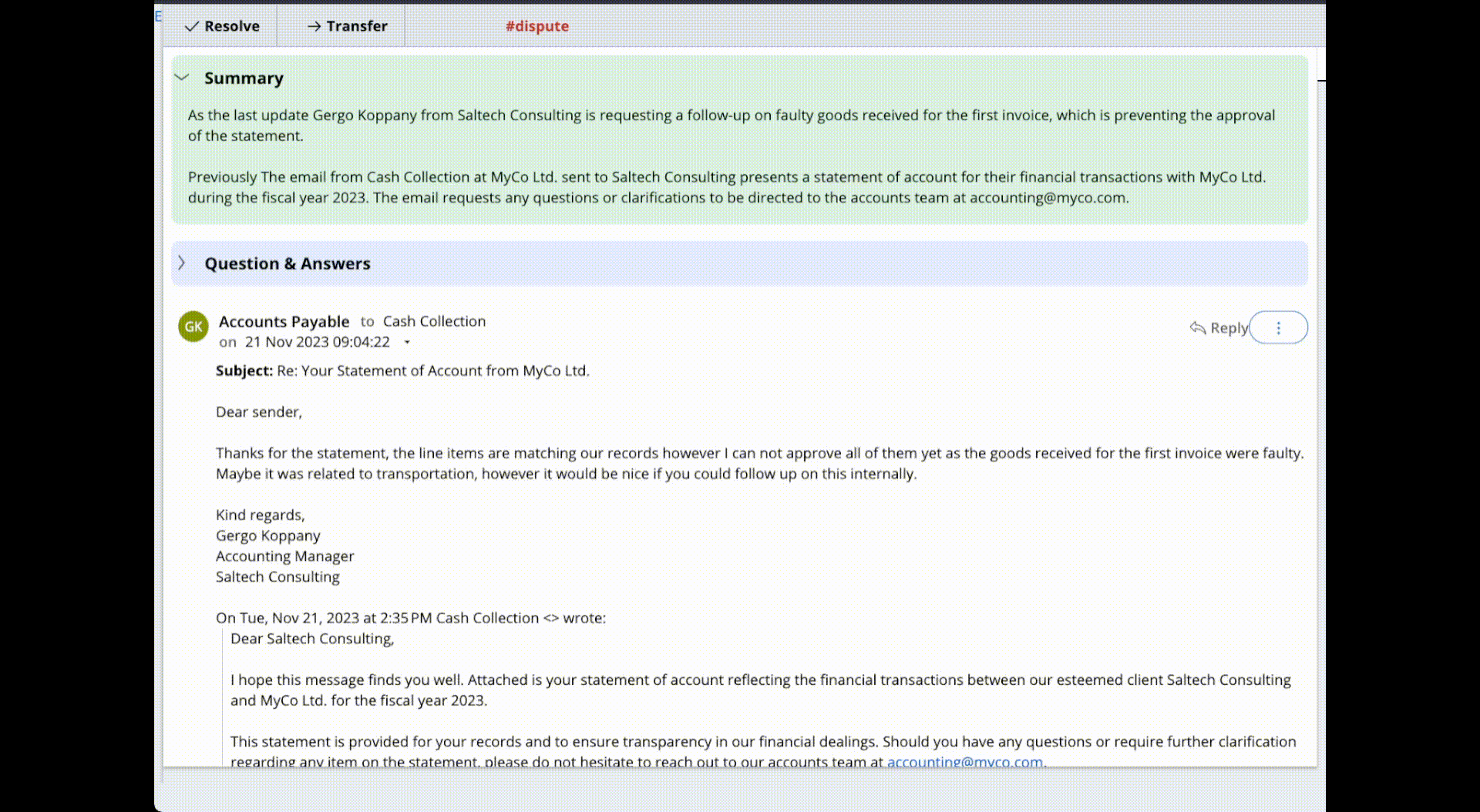
- promises to make the payment soon,
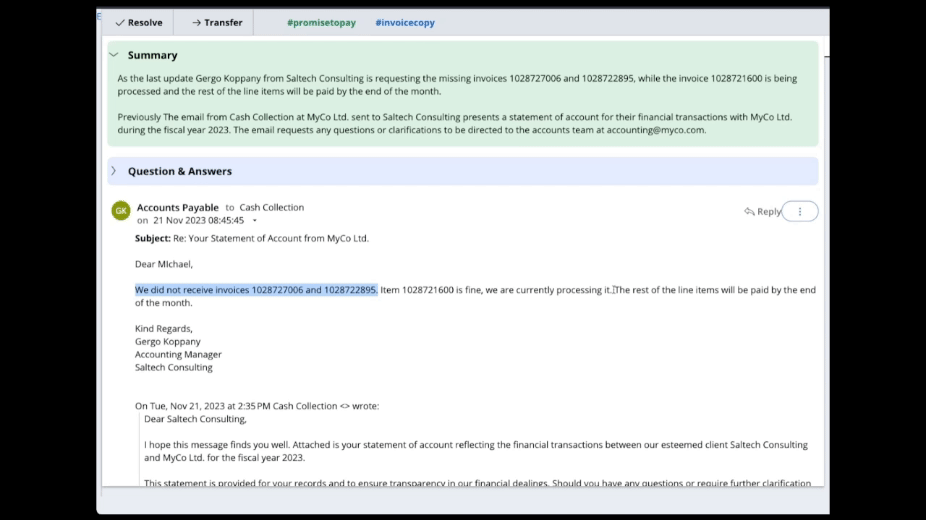
- claims that they haven’t received an invoice,
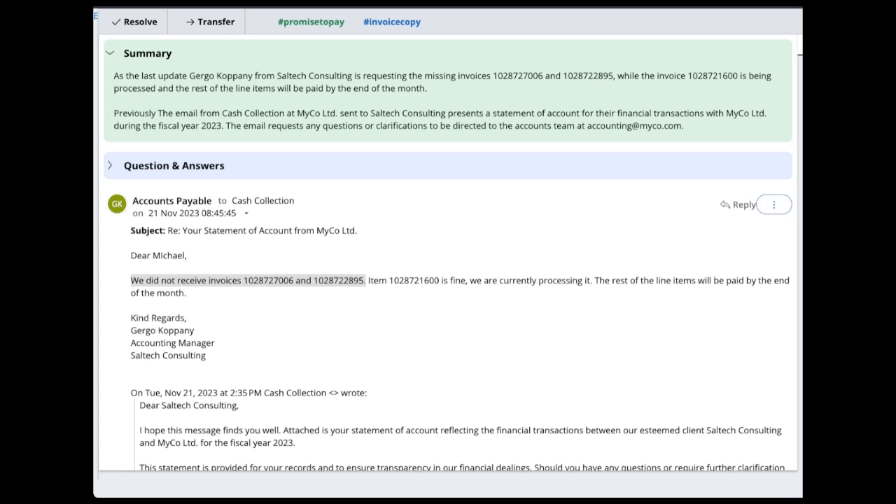
- or declares that they are unable to pay.
The examples mentioned above are actual implementations, but there are many more possibilities. For instance, NLP models can reliably identify the language of a text. Based on an email’s language, it can be routed to the appropriate team. The list of potential applications goes on…
Extracting information
After identifying the intent of an email, the next step towards productivity is to process it. This typically involves triggering a process to handle the email. Most processes require some input, usually derived from the email’s text, which is filled out by humans. Take, for instance, a scenario where the email’s purpose is to request copies of invoices. After recognizing this intent, it’s also necessary to infer which specific invoices need to be sent. Transformer-based AI models have greatly facilitated the extraction of such specific information. Furthermore, these capabilities can be utilized to highlight the relevant text in the email that informed the decision about its intent.
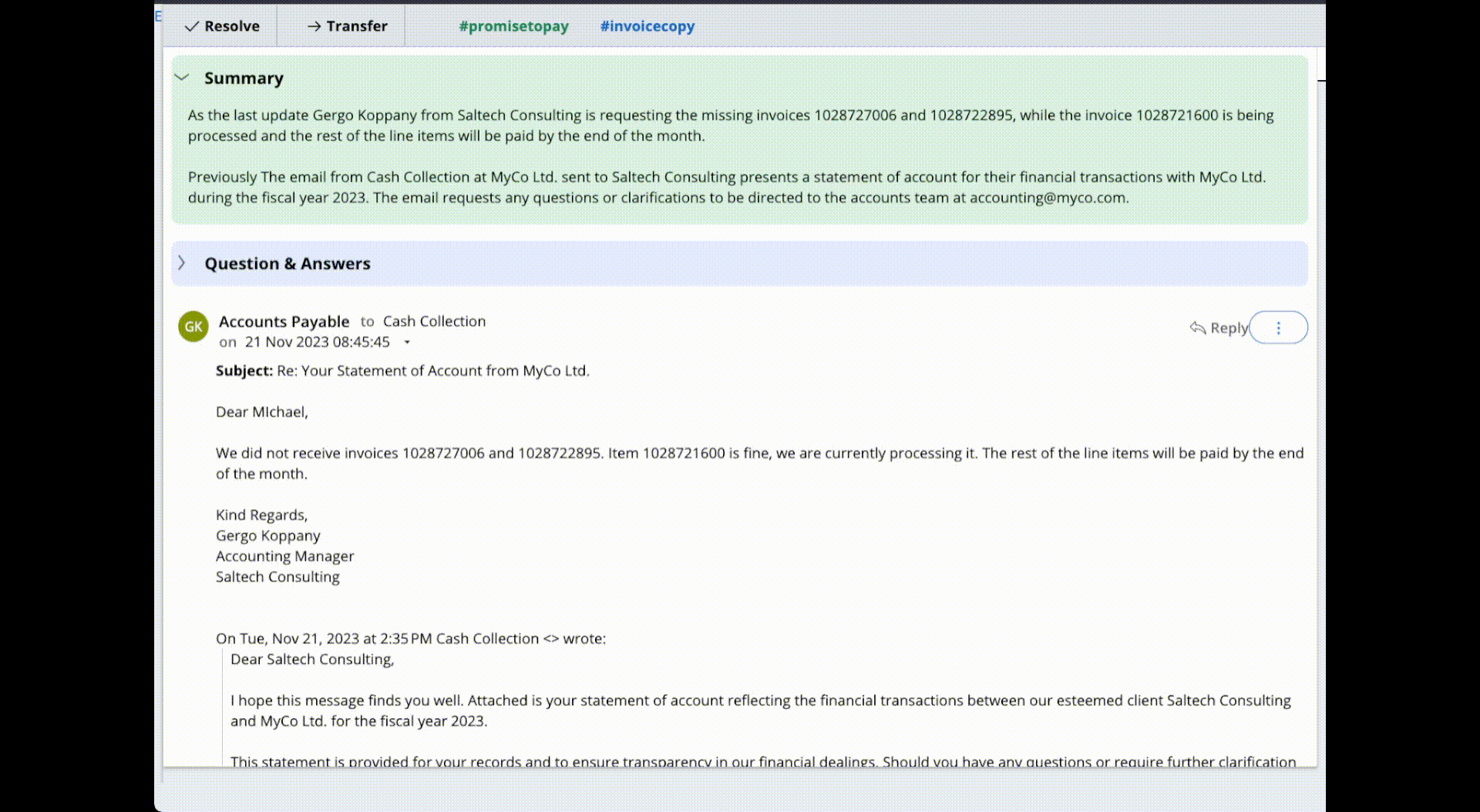
Question Answering
Another useful application can be to extract answers to questions from the text.
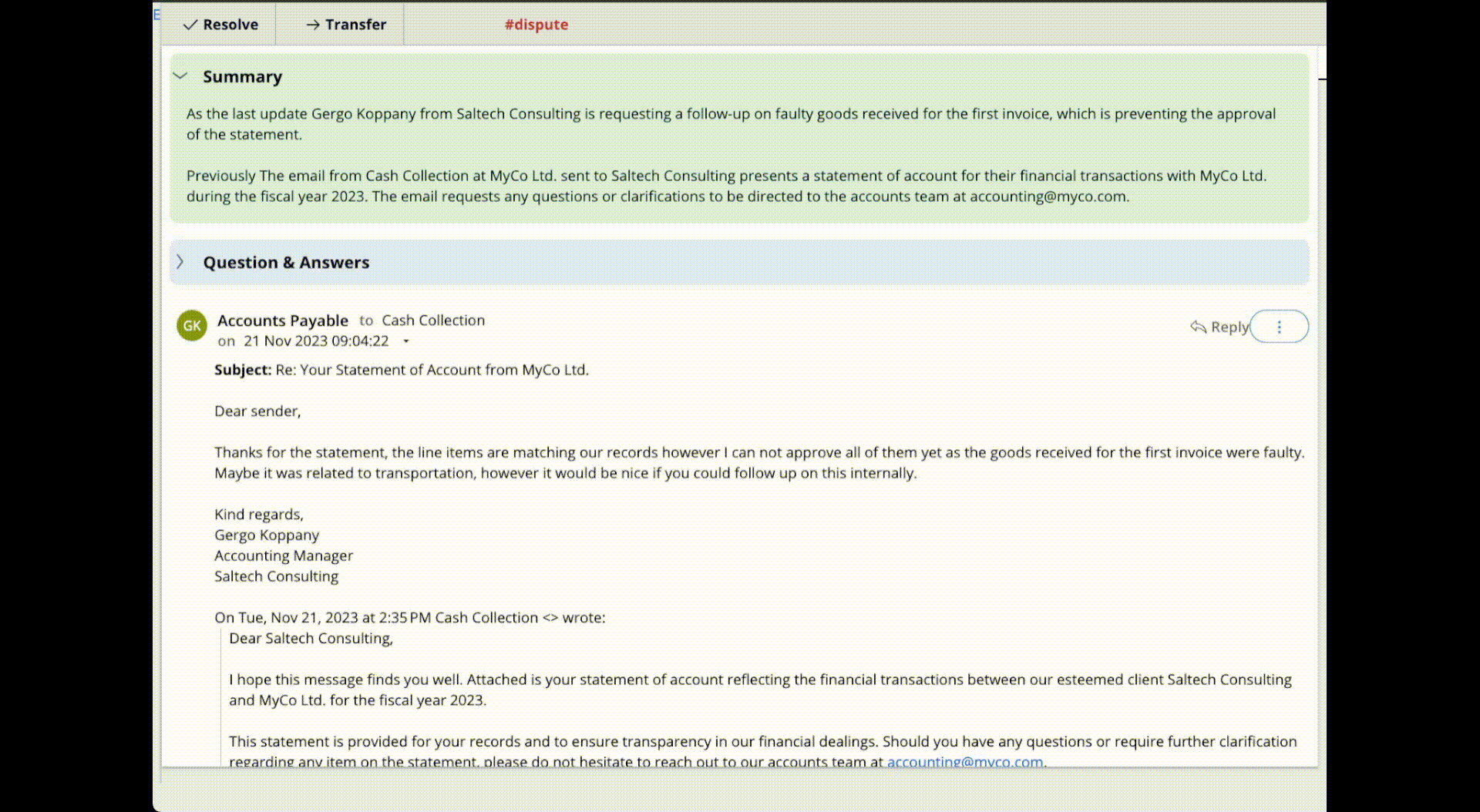
Further possibilities
There’s been enormous progress in the field of audio, image and video models too. Audio-to-text models are capable of producing high-quality transcriptions of calls, which can then be summarized, thereby automating note-taking. Visual models allow us to extract key information from invoices, receipts, remittance letters, etc.
With new state-of-the-art models emerging approximately every three months in various modalities, this is a rapidly evolving subject with many opportunities.

